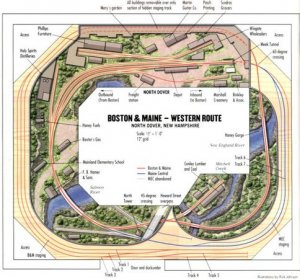I've recently tore out my old layout, and now planning a new one. I'm sooooo confused about new plans though. I don't know what to do. I've made 2 plans so far but there on microsoft paint... Are there any programs I can download online?
Part 2... I'd like to see what some of you think I should do by making a plan. The room is 14.5x11 ft. 2 main lines are a must, lots of switching and lots of main line action. Scenic details (mtns, rivers, etc.) The era is modern, lots of long Amtrak Superliner, UP, BNSF NS stuff like that. Thanks for anyone who makes a plan.
Part 2... I'd like to see what some of you think I should do by making a plan. The room is 14.5x11 ft. 2 main lines are a must, lots of switching and lots of main line action. Scenic details (mtns, rivers, etc.) The era is modern, lots of long Amtrak Superliner, UP, BNSF NS stuff like that. Thanks for anyone who makes a plan.




